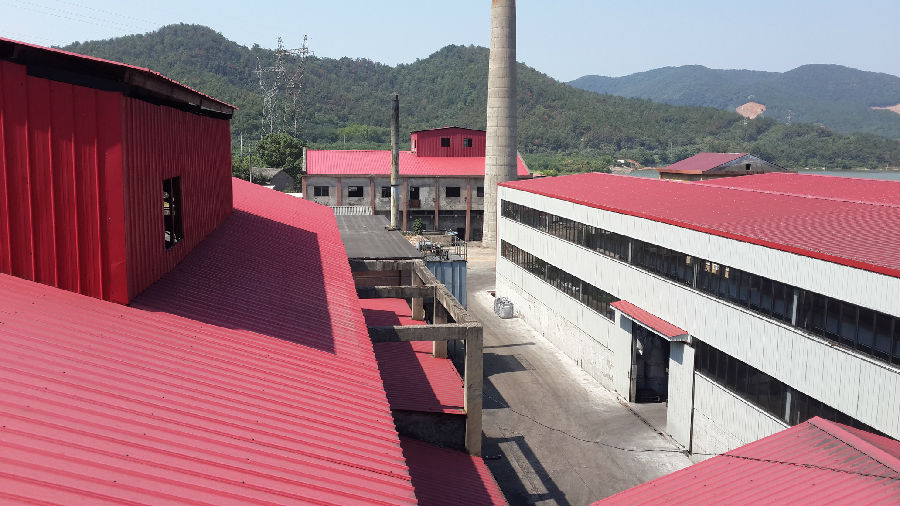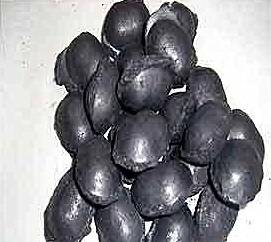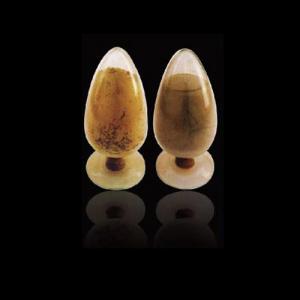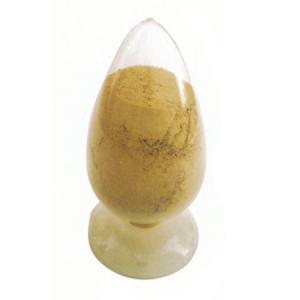Calcined Petroleum Coke Supply With Large Quantity
- Loading Port:
- Shekou
- Payment Terms:
- TT OR LC
- Min Order Qty:
- 20 m.t
- Supply Capability:
- 1000 m.t/month
OKorder Service Pledge
OKorder Financial Service
You Might Also Like
Factory Background
The factory is majorly running and operating carbon additive (pitch coke, calcined petroleum coke and anthracite), low nitrogen carbon additive, and brake pad making material. Company is the long term supplier of Sinosteel Corporation, Shanghai Carbon Corporation, the plant of SGL Group the Carbon Company in China and some largest special carbon products producing plants.
YUAI also supplies huge amout of high quality carbon additive and graphite carbon additive to steel plants, foundries and ferrotungsten plants. YUAI has been assigned by BAO STEEL as the only organization for processing pitch coke for export purpose. The group’s major products are constantly exported to Japan, Korea, Malaysia, South East Asia countries, Europe and America, which receive praises by our consumers.
The group has invested numbers of calcinators in Anhui China to ensure the capability of producing and processing huge amount of carbon additive. Further investment is on process. According to the orders from customers, YUAI is able to processing and providing different specifications of carbon additive and other products. To provide best quality of products and to offer customers most satisfied service is YUAI’s operating objectives.
Calcined Petroleum Coke
FC:98.5%min,
S:0.5%max
A:0.8%max
V:0.7%max
Mositure:0.5%max
Size:1-5mm
This product is mainly used in steel-making and foundry. Calcined Petroleum Coke
Calcined Petroleum Coke comes from delayed coke which extracted from oil refinery. Although Calcined Petroleum Coke contains a little bit higher level of sulfur and nitrogen than pitch coke, the price advantage still makes it widely used during steel-making and founding as a kind of carbon additive/carburant.
Packaging & Delivery
Packaging Detail:25kg paper bag into 1t weaving bag 5kg, 10kg and 20kg weaving bag into 1t weaving bag 25kg weaving bag put on pallet covered with entanglement wrap product direct into packing bag 25kg paper bag put on pallet covered with entanglement Wrap 25kg weaving bag into 1t weaving bag.
Delivery Details: 7 days


- Q:How do monolithic refractories improve the performance of iron and steel furnaces?
- Monolithic refractories play a crucial role in enhancing the performance of iron and steel furnaces through various means. Firstly, these refractories offer exceptional thermal insulation, which helps maintain a stable and high temperature within the furnace. This is of utmost importance as the production of iron and steel necessitates extremely high temperatures for efficient melting and refining processes. Secondly, monolithic refractories possess remarkable resistance to thermal shock and can endure rapid temperature fluctuations without cracking or spalling. This is particularly significant in iron and steel furnaces where temperature fluctuations can be substantial during operations. By withstanding thermal shock, these refractories ensure the durability of the furnace lining, thereby reducing the need for maintenance and minimizing downtime. Moreover, monolithic refractories display excellent resistance to chemical attacks caused by the molten metal and slag in the furnace. The production of iron and steel involves the use of various chemical agents that can corrode and erode the furnace lining. Monolithic refractories offer superior resistance to these chemical attacks, preserving the integrity of the furnace lining and preventing contamination of the metal being produced. Additionally, monolithic refractories possess exceptional mechanical strength and abrasion resistance. This is crucial as they are subjected to mechanical stresses and wear resulting from the movement of materials inside the furnace, such as charging and tapping operations. The high mechanical strength and abrasion resistance of these refractories ensure their durability and prolong their service life in iron and steel furnaces. In conclusion, monolithic refractories enhance the performance of iron and steel furnaces by providing superior thermal insulation, resistance to thermal shock and chemical attacks, as well as high mechanical strength and abrasion resistance. These properties contribute to the efficient and reliable operation of the furnace, resulting in increased productivity, reduced maintenance costs, and improved product quality.
- Q:What are the advantages of using monolithic refractories in the iron and steel industry?
- There are several advantages of using monolithic refractories in the iron and steel industry. Firstly, monolithic refractories offer excellent thermal insulation properties. This means that they are able to withstand and retain high temperatures, which is crucial in the iron and steel manufacturing process. The ability to withstand extreme heat ensures that the refractories maintain their structural integrity, reducing the risk of failure and maintaining operational efficiency. Secondly, monolithic refractories have superior corrosion resistance. In the iron and steel industry, where materials are exposed to harsh chemicals and corrosive agents, the use of monolithic refractories helps to protect the equipment and structures from degradation. This not only extends the lifespan of the refractories but also reduces maintenance costs and downtime. Another advantage of monolithic refractories is their versatility. Unlike traditional refractory bricks, which are rigid and require skilled labor for installation, monolithic refractories can be cast or sprayed into various shapes and sizes. This flexibility allows for easier installation and customization, resulting in better lining design and improved performance. Additionally, monolithic refractories can be easily repaired or patched in case of damage, minimizing production disruptions. Furthermore, monolithic refractories have excellent mechanical strength and abrasion resistance. In the iron and steel industry, where materials are constantly being moved and processed, the refractories must be able to withstand mechanical stresses and abrasion. Monolithic refractories provide the necessary strength and resistance, ensuring that they can withstand the rigors of the industry without compromising performance. Lastly, the use of monolithic refractories in the iron and steel industry can lead to cost savings. Due to their versatility and ease of installation, monolithic refractories require less labor and time for installation, resulting in reduced installation costs. Additionally, their longer lifespan and resistance to corrosion and thermal shock minimize the need for frequent replacements, reducing maintenance and downtime costs. In conclusion, the advantages of using monolithic refractories in the iron and steel industry include excellent thermal insulation, corrosion resistance, versatility, mechanical strength, and cost savings. These benefits make monolithic refractories an ideal choice for lining furnaces, ladles, and other equipment used in the production of iron and steel.
- Q:How do monolithic refractories withstand chemical attack from molten metals and slag?
- Monolithic refractories are highly resistant to chemical attack from molten metals and slag due to their unique composition and structure. These refractories are typically made from a single, solid piece with no joints or seams, which minimizes the opportunity for chemical penetration. One of the key factors that enables monolithic refractories to withstand chemical attack is their high melting point. These materials are designed to have a melting point significantly higher than the temperature of the molten metal or slag they are exposed to. This prevents the refractory from melting or deforming when in contact with the hot molten substances. In addition to their high melting point, monolithic refractories are formulated with materials that have excellent chemical resistance. They are often composed of a combination of oxides, such as alumina, magnesia, and zirconia, which have a strong affinity for oxygen and form stable compounds. This allows the refractory to form a protective oxide layer on its surface when exposed to molten metals and slag, effectively shielding it from chemical attack. Furthermore, the dense and compact structure of monolithic refractories plays a crucial role in their resistance to chemical attack. The absence of joints and seams minimizes the chances of molten metals and slag infiltrating the refractory and causing chemical reactions. This dense structure also reduces the porosity of the material, making it less permeable to aggressive substances. Moreover, manufacturers often add specialized additives to monolithic refractories to enhance their chemical resistance. These additives can include fibers, binders, and corrosion inhibitors, which further improve the refractory's ability to withstand chemical attack. In conclusion, monolithic refractories are designed to withstand chemical attack from molten metals and slag through their high melting point, chemical-resistant composition, dense structure, and specialized additives. These properties allow them to maintain their integrity and performance even in the harshest environments, making them an ideal choice for applications involving high-temperature and corrosive substances.
- Q:What are the typical applications of monolithic refractories in blast furnaces?
- Due to their unique properties and applications, monolithic refractories find extensive use in blast furnaces. These refractories consist of a single, uniform material that can be shaped and installed in various forms without the need for joints or seams. This particular characteristic makes them highly suitable for lining and safeguarding the different zones of a blast furnace. One common use of monolithic refractories in blast furnaces is for lining the hearth, which is the lowermost part of the furnace where molten iron and slag collect. Monolithic refractories are employed to create a sturdy and heat-resistant lining capable of withstanding the extreme temperatures and chemical reactions that occur in this region. Another frequent application is the lining of the bosh, the transitional zone between the hearth and the blast furnace's stack. The bosh is subjected to elevated temperatures and mechanical stresses resulting from the movement of burden materials. To ensure its longevity and efficiency, monolithic refractories with high thermal shock resistance and abrasion resistance are utilized. Monolithic refractories are also utilized for lining the stack and the tuyere area. The stack refers to the vertical portion of the furnace where iron ore reduction takes place, while the tuyere area is where hot air blast is injected into the furnace. Both these areas necessitate refractories capable of withstanding high temperatures, chemical reactions, and mechanical stresses. Moreover, monolithic refractories find application in the repair and maintenance of blast furnaces. Due to the harsh conditions inside the furnace, the lining may deteriorate over time. Monolithic refractories can be easily applied as patching materials to restore the lining's integrity and extend the furnace's lifespan. In summary, monolithic refractories play a crucial role in blast furnaces by lining the hearth, bosh, stack, and tuyere area, as well as facilitating repairs and maintenance. These refractories offer exceptional thermal shock resistance, abrasion resistance, and durability, making them indispensable for the efficient operation of blast furnaces in the iron and steel industry.
- Q:What are the main causes of monolithic refractory failure in the iron and steel industry?
- Monolithic refractory failure in the iron and steel industry can be attributed to various causes. Thermal cycling stands out as one of the primary factors. The extreme temperatures encountered during iron and steel manufacturing, including melting, casting, and heat treating, expose the refractory lining to significant thermal stress. This repetitive expansion and contraction of the material can lead to cracking, spalling, or even complete disintegration of the refractory. Chemical attack is another common cause of failure. The iron and steel industry utilizes different chemicals, such as molten metal, slag, and gases, which can react with the refractory lining. This chemical interaction can result in erosion, corrosion, or chemical decomposition of the refractory material, ultimately causing failure over time. Mechanical stress also plays a significant role in monolithic refractory failure. The heavy machinery and equipment employed in iron and steel production produce vibrations, shocks, and impacts that can weaken or damage the refractory lining. Additionally, improper installation or design can create stress concentration points, making the refractory more susceptible to failure. Furthermore, refractory failure can be attributed to improper maintenance and operational practices. Inadequate cooling or heating procedures, improper drying and curing of the refractory, and insufficient cleaning and inspection can all affect the longevity and performance of the material. Neglecting regular maintenance and timely repairs can exacerbate minor issues, eventually leading to more significant failures. Lastly, the choice and quality of refractory material are crucial factors in failure. Opting for an unsuitable refractory for a specific application or using low-quality materials can result in premature failure. Considering factors such as temperature range, chemical exposure, and mechanical stress is essential when selecting the refractory lining to ensure its suitability and durability in the iron and steel industry. To summarize, the main causes of monolithic refractory failure in the iron and steel industry include thermal cycling, chemical attack, mechanical stress, improper maintenance and operational practices, and the choice and quality of refractory material. Addressing these factors through proper installation, regular maintenance, and careful material selection can help mitigate refractory failures and enhance the overall efficiency and productivity of iron and steel production processes.
- Q:How do monolithic refractories contribute to the safety of iron and steel operations?
- Monolithic refractories play a crucial role in ensuring the safety of iron and steel operations. They provide excellent thermal insulation and resistance to high temperatures, preventing heat transfer to the environment and minimizing the risk of accidents or fires. Additionally, these refractories possess high mechanical strength and chemical resistance, protecting the structural integrity of furnaces and other equipment under extreme conditions. By effectively containing heat and maintaining the stability of the production process, monolithic refractories enhance the overall safety and reliability of iron and steel operations.
- Q:What are the key properties of gunning mixes used for monolithic refractory repairs?
- The key properties of gunning mixes used for monolithic refractory repairs include: 1. High durability: Gunning mixes should have excellent resistance to thermal shock, abrasion, and chemical attack. This ensures that the repaired refractory material can withstand the harsh conditions in industrial furnaces and kilns. 2. High strength: Gunning mixes should have a high compressive strength to provide structural integrity to the repaired refractory lining. This is especially important in areas that are subjected to high mechanical stress or load. 3. Easy application: Gunning mixes should have good gunning properties, allowing for easy and efficient application. They should have the ability to be sprayed or gunned onto the surface to be repaired, providing a smooth and even coating. 4. Quick setting and drying: Gunning mixes should have a fast setting and drying time to minimize downtime during repairs. This ensures that the repaired refractory lining can be quickly put back into service, reducing production losses. 5. Good adhesion: Gunning mixes should have excellent adhesion to the existing refractory material. This ensures a strong bond between the new repair material and the old lining, preventing any potential delamination or separation. 6. Thermal stability: Gunning mixes should have a high resistance to thermal cycling and temperature fluctuations. They should be able to maintain their structural integrity and mechanical properties even under extreme heat conditions. 7. Chemical compatibility: Gunning mixes should be chemically compatible with the materials they come into contact with, such as molten metals or corrosive gases. This ensures that the repaired refractory lining can withstand the corrosive effects of these substances. Overall, the key properties of gunning mixes for monolithic refractory repairs are focused on providing durability, strength, easy application, quick setting, good adhesion, thermal stability, and chemical compatibility. These properties ensure that the repaired refractory lining can effectively withstand the harsh operating conditions in industrial furnaces and kilns, prolonging their lifespan and reducing maintenance costs.
- Q:What are the key properties of patching mixes used for monolithic refractory repairs?
- The key properties required for patching mixes used in the repair of monolithic refractories include: 1. High temperature resistance: The patching mixes should have the ability to withstand high temperatures without compromising their structural integrity. They must be capable of enduring temperatures ranging from 2000 to 3000 degrees Fahrenheit. 2. Chemical resistance: These patching mixes should be resistant to chemical reactions that occur in the presence of molten metals, slag, or other corrosive substances. They should not deteriorate or react with these materials, ensuring the longevity of the repaired refractory. 3. Thermal shock resistance: The patching mixes must have the ability to withstand sudden and extreme temperature changes without cracking or spalling. Refractory linings are often subjected to intense thermal cycling, and the patching material should be able to endure these conditions without failure. 4. Adhesion: The patching mixes should possess excellent adhesion properties to create a strong bond with the existing refractory material. This is crucial to prevent any separation or detachment of the patching material, which could result in further damage or failure. 5. Workability: The patching mixes should have good workability, allowing for easy and efficient application. They should be easily moldable and capable of effectively filling cracks, gaps, or damaged areas. 6. Setting and curing time: The patching mixes should have a reasonable setting and curing time. They should be able to harden quickly to minimize downtime during repairs, while also providing sufficient time for proper application and shaping. 7. Density and porosity: The patching material should have an appropriate density and porosity to resist penetration by molten metal or slag. Low porosity ensures that the repaired refractory maintains its thermal insulation properties. 8. Mechanical strength: The patching mixes should exhibit adequate mechanical strength to withstand physical stresses, such as abrasion or impact, that may occur during operation. 9. Compatibility: It is important that the patching mixes are compatible with the existing refractory material to ensure a seamless integration and prevent any potential chemical reactions or incompatibilities that could compromise the repair. By considering these key properties, patching mixes used for monolithic refractory repairs can effectively restore the integrity and performance of refractory linings, prolonging their lifespan and ensuring efficient and safe operation in high-temperature environments.
- Q:How do monolithic refractories withstand high temperatures in iron and steel production?
- Monolithic refractories are able to withstand high temperatures in iron and steel production due to their composition and unique properties. These refractories are made from a single, continuous material, which eliminates the need for joints or seams that could weaken under extreme heat. Additionally, they have high thermal conductivity and low thermal expansion, allowing them to effectively absorb and distribute the intense heat in the production process without cracking or breaking. Furthermore, monolithic refractories are highly resistant to chemical corrosion and erosion, which is crucial in the harsh environment of iron and steel production. Overall, the combination of these factors enables monolithic refractories to withstand the extreme temperatures involved in iron and steel production.
- Q:How do monolithic refractories contribute to the overall productivity of iron and steel production?
- Monolithic refractories play a critical role in enhancing the overall productivity of iron and steel production. These refractories are essential components used in the lining of high-temperature furnaces and other equipment used in these industries. One way monolithic refractories contribute to productivity is by providing excellent thermal insulation. With their high thermal conductivity, they help to reduce heat loss from the furnaces, thereby minimizing energy consumption and improving overall efficiency. This insulation property allows for higher operating temperatures, leading to faster and more efficient production processes. Additionally, monolithic refractories offer superior resistance to thermal shock and chemical corrosion. In the iron and steel production process, various harsh conditions are encountered, such as rapid temperature changes and exposure to molten metal and slag. Monolithic refractories are designed to withstand these extreme environments, ensuring longer service life and reduced downtime for maintenance and repairs. This directly translates to increased productivity and reduced production costs. Moreover, monolithic refractories provide better dimensional stability compared to traditional brick refractories. Their ability to conform to complex shapes and structures allows for improved lining design, facilitating better heat transfer and distribution. This uniformity in heat distribution contributes to enhanced process control and greater consistency in product quality. Furthermore, the installation and repair of monolithic refractories are relatively easier and faster compared to traditional brick refractories. This ease of installation and repair reduces downtime during maintenance, allowing for more continuous production. The shorter downtime leads to increased productivity and higher output. In summary, monolithic refractories contribute to the overall productivity of iron and steel production by providing excellent thermal insulation, resistance to thermal shock and chemical corrosion, better dimensional stability, and ease of installation and repair. These properties result in improved energy efficiency, reduced downtime, enhanced process control, and higher product quality, ultimately leading to increased productivity and profitability for the industry.
1. Manufacturer Overview |
|
|---|---|
| Location | |
| Year Established | |
| Annual Output Value | |
| Main Markets | |
| Company Certifications | |
2. Manufacturer Certificates |
|
|---|---|
| a) Certification Name | |
| Range | |
| Reference | |
| Validity Period | |
3. Manufacturer Capability |
|
|---|---|
| a)Trade Capacity | |
| Nearest Port | |
| Export Percentage | |
| No.of Employees in Trade Department | |
| Language Spoken: | |
| b)Factory Information | |
| Factory Size: | |
| No. of Production Lines | |
| Contract Manufacturing | |
| Product Price Range | |
Send your message to us
Calcined Petroleum Coke Supply With Large Quantity
- Loading Port:
- Shekou
- Payment Terms:
- TT OR LC
- Min Order Qty:
- 20 m.t
- Supply Capability:
- 1000 m.t/month
OKorder Service Pledge
OKorder Financial Service
Similar products
New products
Hot products
Related keywords


























